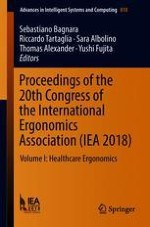2019 | OriginalPaper | Chapter
Estimation Accuracy of Average Walking Speed by Acceleration Signals: Comparison Among Three Different Sensor Locations
Authors : Yoshiyuki Kobayashi, Motoki Sudo, Hiroyasu Miwa, Hiroaki Hobara, Satoru Hashizume, Kanako Nakajima, Naoto Takayanagi, Tomoya Ueda, Yoshifumi Niki, Masaaki Mochimaru
Published in: Proceedings of the 20th Congress of the International Ergonomics Association (IEA 2018)
Publisher: Springer International Publishing
Activate our intelligent search to find suitable subject content or patents.
Select sections of text to find matching patents with Artificial Intelligence. powered by
Select sections of text to find additional relevant content using AI-assisted search. powered by
